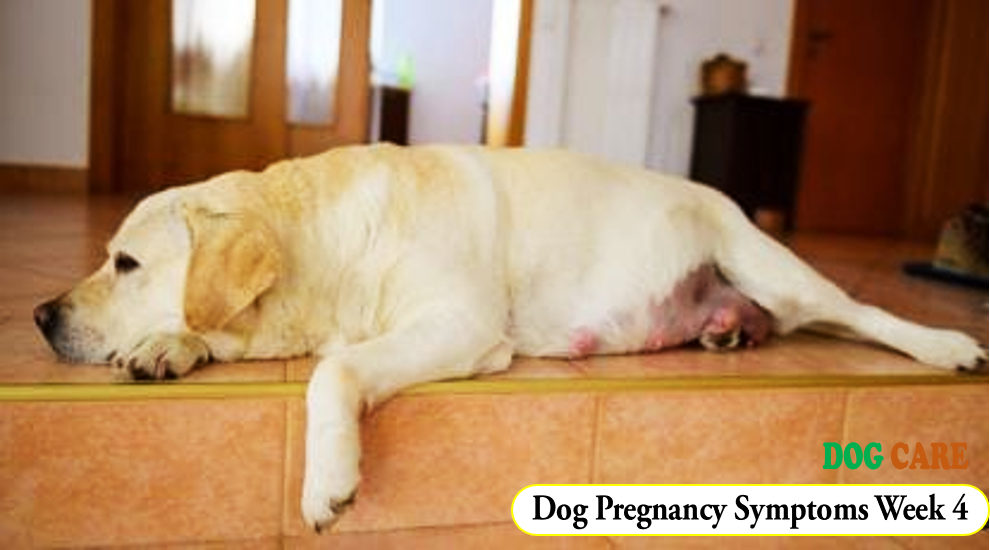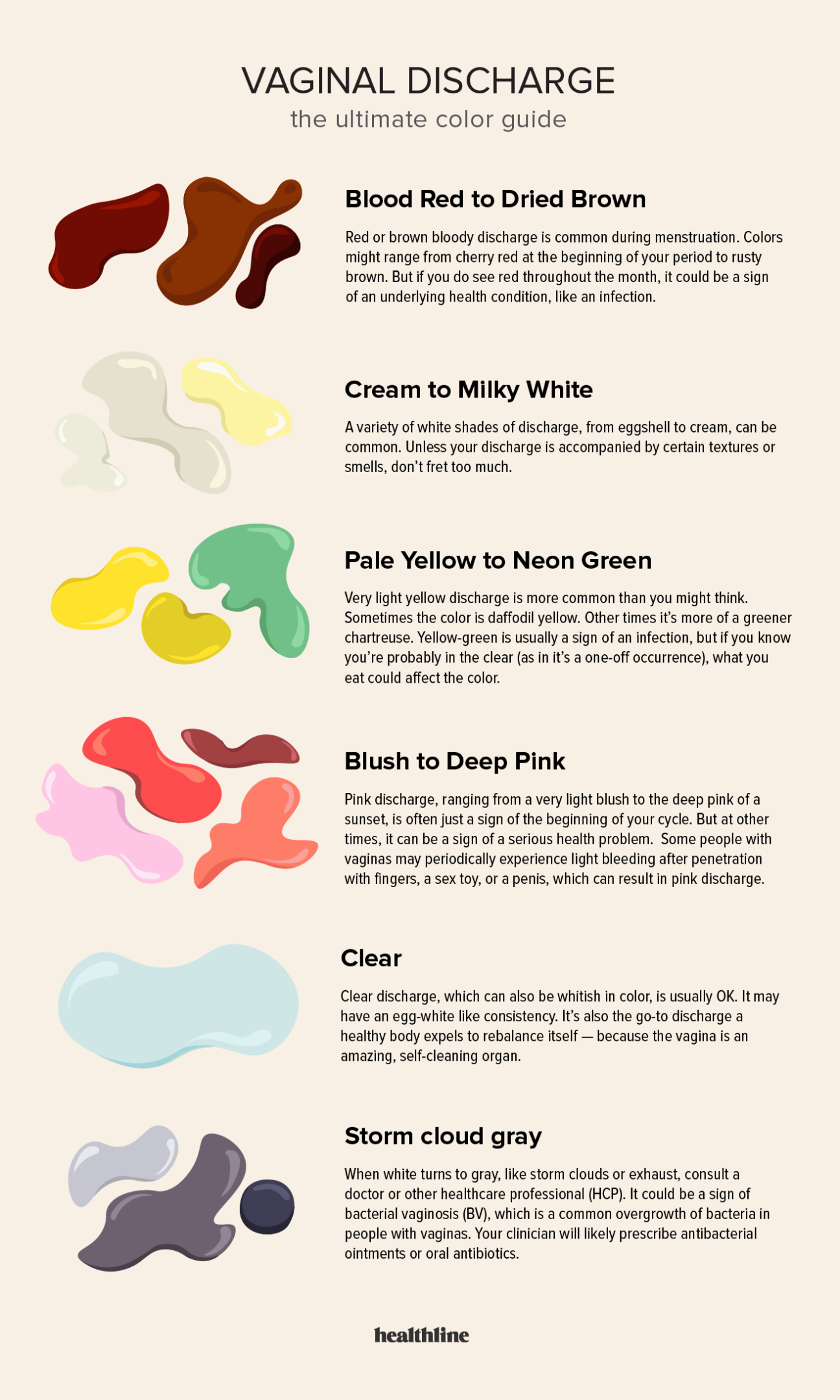Dog Pregnancy Symptoms Week 4 : Dog pregnancy symptoms in week 4 include enlarged nipples and increased appetite. In week 4 of a dog’s pregnancy, you may notice that her nipples appear larger and more prominent than usual, and she may also have a stronger appetite than usual.
These changes are typical signs of pregnancy in dogs and can be an indication that her body is preparing to support the growing puppies. It is important to closely monitor her condition during this stage and provide proper nutrition and care to ensure the health of both the mother and her puppies.
Regular veterinarian check-ups are also recommended to ensure a smooth and healthy pregnancy.

Understanding Canine Reproduction
Dogs have a unique reproductive cycle, and understanding how canine reproduction works is essential, especially if you are a dog owner or breeder. Canine reproduction involves various stages and processes that play a vital role in the successful breeding and pregnancy of dogs. In this blog post, we will explore the canine reproduction cycle and how dogs become pregnant.
The Canine Reproduction Cycle
The canine reproduction cycle is divided into four stages: proestrus, estrus, diestrus, and anestrus.
1. Proestrus:
Proestrus marks the beginning of the reproductive cycle for female dogs. During this stage, you may notice some noticeable changes in your dog’s behavior and physical appearance. These changes include:
- Swelling of the vulva: The vulva, located below the anus, will appear swollen and may have a slight discharge.
- Increase in urination: Your dog may urinate more frequently.
- Behavioral changes: Your dog may become more attentive to male dogs but will not allow mating.
2. Estrus:
Estrus is the stage during which female dogs are fertile and can conceive. Key symptoms of estrus include:
- Bleeding and discharge: The discharge from the vulva may change from pink to a light red color and then gradually become straw-colored or clear.
- Increased attraction to males: Your female dog will exhibit more interest in male dogs and may allow mating.
- Swelling and softening of the vulva: The vulva will remain swollen and become softer.
3. Diestrus:
Diestrus is the stage following estrus and is characterized by a decrease in sexual receptivity. Symptoms of diestrus include:
- Discharge decrease: The discharge will decrease and become thicker and lighter in color.
- Behavioral changes: Your dog’s interest in mating will decrease.
- Returning to normal: The vulva will gradually return to its normal size and will no longer be swollen.
4. Anestrus:
Anestrus is the resting phase of the reproductive cycle and involves a period of sexual inactivity. During this stage, your dog’s reproductive system will return to its normal state. No visible signs or symptoms will be present, and your dog will not be receptive to mating.
How Dogs Become Pregnant
Dogs become pregnant through natural mating or artificial insemination.
Natural Mating:
Natural mating occurs when a male and female dog mate while the female is in estrus. During this process, sperm is ejaculated into the vagina and travels up the reproductive tract to reach the eggs. This allows fertilization to occur, leading to pregnancy.
Artificial Insemination:
If natural mating is not possible or preferred, artificial insemination can be used. This involves collecting semen from a male dog and artificially introducing it into the female dog’s reproductive tract. This method allows for the controlled and targeted breeding of dogs.
Understanding the canine reproduction cycle and the process of how dogs become pregnant is crucial for dog owners and breeders alike. By recognizing the symptoms and stages, you can better care for your dog during different reproductive phases and ensure a successful breeding and pregnancy journey.

Credit: www.healthline.com
Week 4 Of Dog Pregnancy
During Week 4 of dog pregnancy, common symptoms begin to appear such as morning sickness, fatigue, and increased appetite. The developing embryos start to form organs and skeletal structures.
Physical Changes In Your Dog
During the fourth week of dog pregnancy, you may start to notice some physical changes in your furry friend. These changes are a result of the developing puppies inside the mother’s womb. It’s important to keep a close eye on your dog’s body as these changes can provide valuable insights into the progression of her pregnancy.
- Belly Enlargement: By week 4, your dog’s belly will become noticeably larger due to the growing fetuses. This expansion can be observed, and you may witness a rounder appearance of your dog’s belly.
- Increased Nipple Size: One of the telltale signs of dog pregnancy is the enlargement of the nipples. During week 4, this change becomes even more noticeable as the body prepares for the puppies’ arrival.
- Weigh Gain: Your dog may start to gain weight at a steady pace during this week of pregnancy. It’s important to monitor her weight gain to ensure it falls within the healthy range.
- Visible Veins: Another physical change you might observe in your pregnant dog is the appearance of prominent veins on her abdomen. These veins become more visible as the blood flow increases to support the developing fetuses.
- Vaginal Discharge: At week 4, you may notice a slight clear or pinkish discharge from your dog’s vulva. This discharge is normal and indicates that the pregnancy is progressing as expected.
Behavioral Changes In Your Dog
Along with the physical changes, you may also observe some behavioral changes in your pregnant dog during the fourth week of her pregnancy. These changes are a result of hormonal fluctuations and the preparation for motherhood.
- Increased Restlessness: Your dog may appear more restless than usual, pacing around or appearing unable to settle down. This restlessness is often a sign of nesting instincts kicking in as she starts to prepare a safe space for her puppies.
- Decreased Activity: As the pregnancy progresses, your dog’s energy levels may decrease. She may spend more time sleeping or simply seem less interested in her usual activities, opting for a more relaxed and sedate lifestyle.
- Changes in Appetite: Many pregnant dogs experience fluctuations in appetite during week 4. Some may have an increased appetite, while others may become pickier eaters. Keeping a close eye on her eating habits will help ensure she maintains a healthy diet.
- Protective Behavior: Dogs often become more protective as their pregnancy advances. You may notice your dog exhibiting behaviors such as guarding her belly or becoming more wary of strangers or unfamiliar animals.
- Mood Swings: Hormonal changes can lead to mood swings in pregnant dogs. Your furry companion may seem more sensitive or irritable than usual. Patience and understanding are key during this time.
It’s important to remember that every dog is unique, and their pregnancy experiences may vary. If you have any concerns about your dog’s health or behavior, it’s always best to consult with your veterinarian for personalized guidance.
Signs Of Pregnancy In Dogs
Determining whether your furry friend is expecting can be an exciting time for any dog owner. Just like in humans, dogs also experience various signs and symptoms during pregnancy. By paying close attention to their behavior and physical changes, you can identify the signs of pregnancy in dogs. In this article, we will focus on the signs that become apparent during the fourth week of dog pregnancy.
Early Signs Of Pregnancy
After the successful mating of your dog, it may take a few weeks before any noticeable changes occur. However, there are some early signs that can hint at your dog’s pregnancy. These signs can include:
- Increase in appetite: Dogs may exhibit an increased appetite during early pregnancy. If you find your dog showing a sudden interest in food and eating larger portions, it could be an early indication.
- Behavioral changes: Dogs may display certain behavioral changes, such as becoming more affectionate or seeking more attention. These changes can be attributed to hormonal fluctuations within their bodies.
- Weight gain: Some dogs may start gaining weight early on in their pregnancy. However, it’s important to note that weight gain alone is not a reliable indicator of pregnancy, as it could also be due to other factors such as overeating or certain health conditions.
Visible Symptoms In Week 4
By the fourth week of pregnancy, you may start observing more visible symptoms in your dog. Here are some key indicators to watch out for:
| Signs | Description |
|---|---|
| Pink nipples | One of the most noticeable changes is the development of pink or swollen nipples. This occurs due to increased blood flow and changes in hormones. |
| Enlarged abdomen | The pregnant dog’s abdomen will gradually start to expand as the puppies grow. It’s important to remember that each dog’s pregnancy may progress differently, and the size of the belly can vary. |
| Darkened vulva | The vulva may darken in color, appearing more pronounced than usual. This change is due to increased blood flow in the area. |
| Vomiting or morning sickness | Just like in humans, some dogs may experience morning sickness and exhibit symptoms such as nausea and intermittent vomiting. |
These symptoms in the fourth week are strong indicators that your dog is indeed pregnant. It is recommended to consult with a veterinarian to confirm the pregnancy and ensure proper care for your expectant dog.
Health Care During Week 4
During week 4 of a dog’s pregnancy, proper health care becomes even more crucial to ensure the well-being of both the mother and her developing puppies. From antenatal vet visits to dietary considerations, there are several important factors to keep in mind. Let’s take a closer look at the key aspects of health care during this stage.
Antenatal Vet Visits
Regular antenatal vet visits are essential during week 4 to monitor the progress of the pregnancy and address any potential complications. The veterinarian will perform thorough examinations, including physical checks and ultrasounds, to evaluate the mother’s overall health and the development of the puppies. These visits are also an opportunity to discuss any concerns, ask questions, and receive guidance on how to best care for the pregnant dog.
Dietary Considerations
Proper nutrition is crucial for the health of the mother and her puppies. During week 4, it is important to pay close attention to the pregnant dog’s diet. While she still requires a balanced and nutritious diet, it is common for her appetite to fluctuate during this stage. It is recommended to divide her daily meals into smaller, more frequent portions to accommodate her changing appetite and ensure she receives enough nutrients.
Additionally, it is crucial to provide the pregnant dog with high-quality puppy food that is specially formulated to meet her nutritional needs during this stage. These types of foods are rich in essential nutrients like protein, calcium, and vitamins, which are crucial for the proper development of the puppies.
It’s worth noting that overfeeding the pregnant dog should be avoided. While she may appear hungry, excessive weight gain can lead to complications during birth. It’s best to consult with the veterinarian to determine the appropriate amount of food to feed the pregnant dog based on her size, breed, and individual needs.
In conclusion, week 4 of a dog’s pregnancy requires careful attention to health care. Regular antenatal vet visits and ensuring a balanced and appropriate diet are vital for the well-being of the mother and her growing puppies. By providing proper health care during this stage, you can help ensure a healthy and successful pregnancy.
Important Preparations For Birth
During week 4 of dog pregnancy, important preparations for birth include monitoring for dog pregnancy symptoms such as appetite changes, weight gain, and nipple enlargement. Providing a comfortable and safe birthing environment is also crucial.
Creating A Whelping Area
When preparing for your dog’s upcoming birth, it’s crucial to create a whelping area where she will feel safe and comfortable. This designated space should be quiet, warm, and free from disturbances. A secluded corner of your home or a separate room works best. To ensure the area is secure, consider the following:
- Set up a whelping box: A whelping box provides a safe and cozy spot for your dog to give birth and care for her puppies. The box should be spacious enough for her to move around but not so large that she loses a sense of security.
- Choose suitable bedding: Soft, non-toxic bedding is essential for the comfort of both the mother and her puppies. Opt for materials that can be easily cleaned and replaced, such as washable blankets or towels.
- Ensure proper ventilation: Good airflow is vital to maintain a healthy environment. Make sure the whelping area is well-ventilated, but avoid drafts that may cause discomfort or harm to the puppies.
- Consider privacy: Dogs often prefer a quiet, secluded space to give birth. Consider using screens or curtains to provide a sense of privacy while still allowing you to monitor the process.
Gathering Necessary Supplies
Before your dog goes into labor, it’s crucial to gather all the necessary supplies for a smooth and stress-free birthing experience. Here are the essential items you should have readily available:
- Whelping kit: A well-stocked whelping kit includes items such as clean towels, sterile gloves, umbilical clamps or dental floss, and an aspirator for removing fluids from the puppies’ airways. It’s better to have these items on hand rather than scrambling to find them in the midst of labor.
- Extra bedding: Having extra bedding available ensures you can easily replace soiled or wet materials, keeping the whelping area clean and hygienic.
- Heat source: Puppies cannot regulate their body temperature initially, so providing a reliable heat source, such as a heating pad or heat lamp, is crucial to keep them warm during their first weeks of life.
- Puppy scale: A puppy scale helps monitor the puppies’ growth and ensures they are gaining weight adequately. This information can be critical for identifying any potential health concerns.
- Emergency contact numbers: Keep important contact numbers, including your veterinarian’s and a backup emergency veterinary clinic, easily accessible in case of any unforeseen complications.
By carefully preparing a comfortable whelping area and gathering the necessary supplies, you can help ensure a smooth and stress-free birth for your dog and her puppies. Taking these important steps allows you to focus on supporting your dog through this life-changing event and provides the best possible start for the new arrivals.

Credit: www.amazon.com
Frequently Asked Questions On Dog Pregnancy Symptoms Week 4
What Are The Early Signs Of Dog Pregnancy?
The early signs of dog pregnancy may include a decrease in appetite, nipple enlargement, and increased sleepiness. You may also notice behavioral changes such as nesting and become more affectionate towards their owner.
How Long Does Dog Pregnancy Last?
A dog’s pregnancy typically lasts for about 63 days or approximately 9 weeks. It’s important to track the start of their heat cycle and count the days from there to estimate the due date.
Can A Dog Have Morning Sickness During Pregnancy?
Yes, dogs can experience morning sickness during pregnancy. Just like humans, they may experience nausea and vomiting in the early stages of pregnancy. However, if the symptoms persist or intensify, consulting a veterinarian is recommended.
How Can I Determine If My Dog Is Pregnant?
To determine if your dog is pregnant, watch for physical signs such as weight gain, nipple enlargement, and abdominal swelling. Additionally, a veterinarian can perform an ultrasound or hormone test to confirm the pregnancy.
Conclusion
Recognizing and understanding the various dog pregnancy symptoms during week 4 is crucial for dog owners. These symptoms, including changes in appetite, behavior, and physical appearance, provide important insights into the health and well-being of the pregnant dog. By staying informed and seeking veterinary care when necessary, owners can ensure a safe and healthy pregnancy for their beloved pets.
Dog Pregnancy Symptoms Week 4


